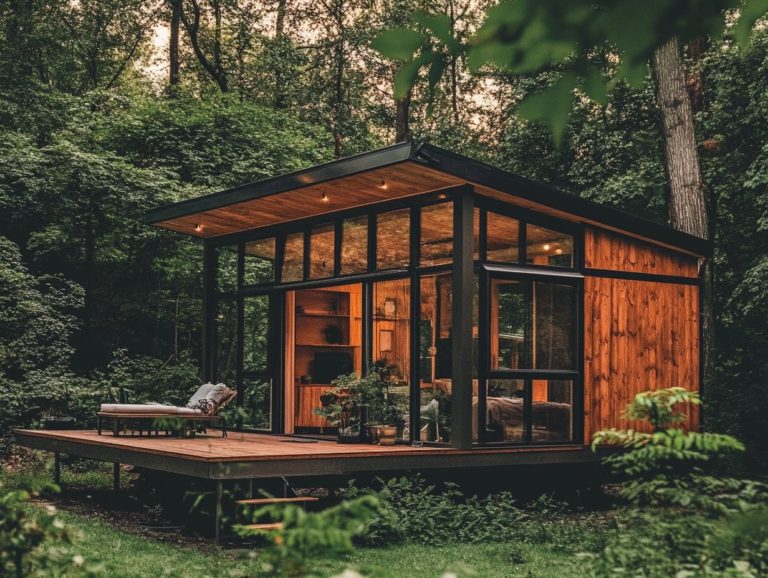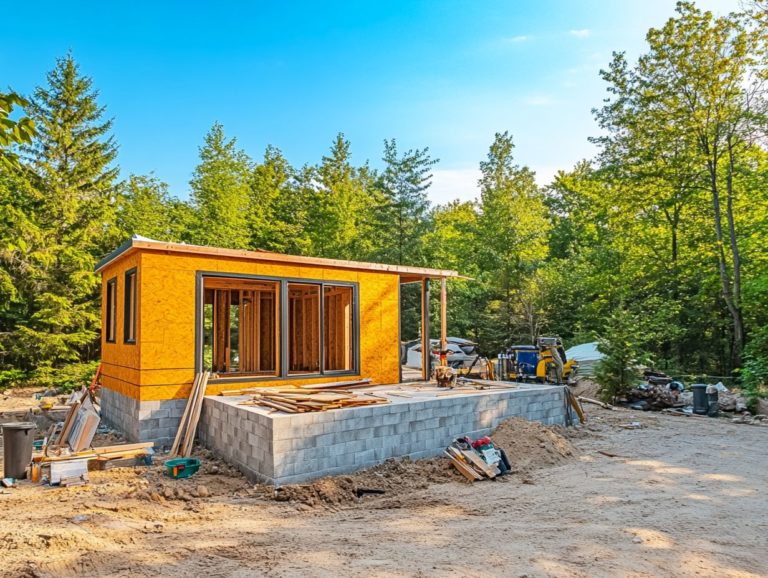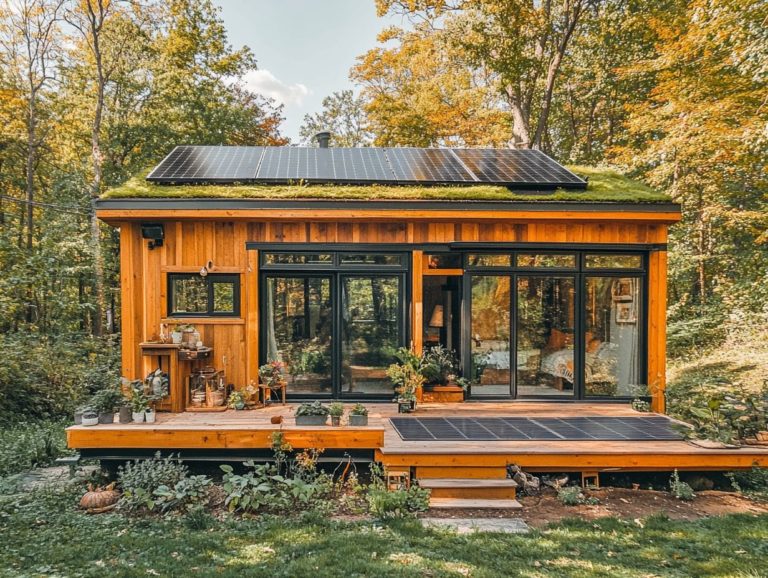Comparing Traditional vs. Sustainable Building Materials
Choosing the right materials for construction is essential, as it greatly affects everything from environmental considerations to long-term expenses.
This exploration will guide you through the differences between traditional building materials and sustainable building materials. You will discover commonly used options and their implications.
Discover the surprising truths about the environmental consequences of conventional materials and the myriad benefits that sustainable alternatives present.
We will also explore the financial aspects, comparing costs to empower you in making informed decisions for a greener future, especially in the Boston custom home market.
Embark on this essential journey and equip yourself with the knowledge to make impactful choices.
Contents [hide]
- Key Takeaways:
- Traditional Building Materials
- Sustainable Building Materials
- Environmental Impact of Traditional Materials
- Environmental Benefits of Sustainable Materials
- Cost Comparison of Sustainable and Traditional Construction Materials
- Frequently Asked Questions about Sustainable Building Materials
- What is the difference between traditional and sustainable building materials used in Boston?
- Why is it important to compare traditional and sustainable building materials in Boston?
- What are some examples of traditional building materials used in Boston?
- What are some examples of sustainable building materials, including those relevant to Boston?
- Are sustainable building materials more expensive than traditional materials, especially in Boston?
- What are the benefits of using sustainable building materials in Boston?
Key Takeaways:
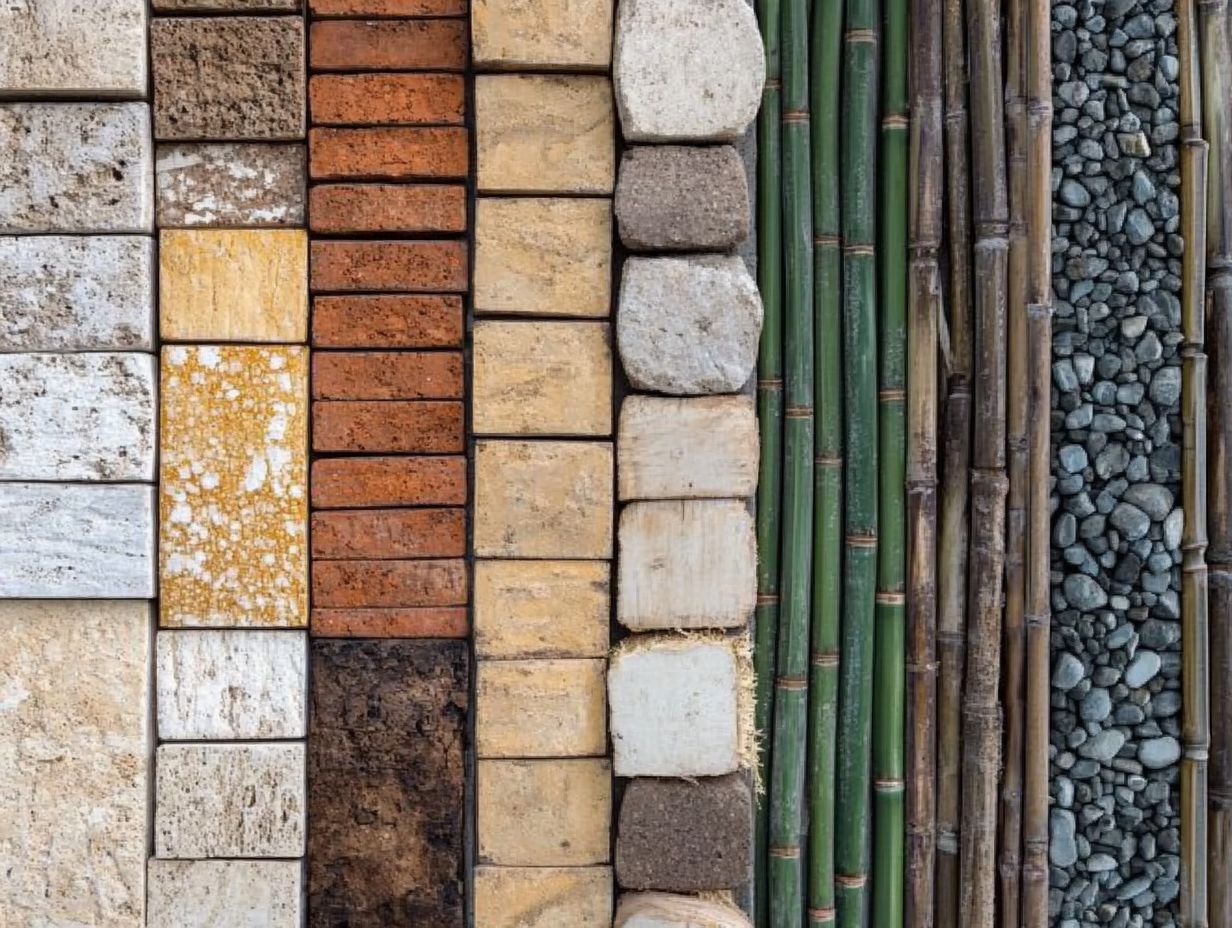
- Traditional building materials have been used for centuries, but they can have significant negative impacts on the environment.
- Sustainable building materials, such as recycled steel and reclaimed wood, offer a greener alternative, with benefits like energy conservation and reduced carbon emissions.
- While traditional materials may seem more cost-effective upfront, consider the long-term costs and environmental benefits when choosing building materials.
Understanding the Importance of Choosing the Right Materials
Choosing the right materials for your Boston custom home is a crucial decision that greatly affects the construction process, energy efficiency, and long-term sustainability of your residence.
As the industry progresses, many builders are increasingly leaning towards sustainable materials that not only reduce environmental footprints but also enhance energy performance.
Take recycled steel, for example; it s becoming popular for its remarkable strength and low maintenance requirements. Then there s reclaimed wood, which adds a unique charm to your home while helping to minimize deforestation.
Consider green roof systems adorned with living vegetation. They not only improve insulation but also contribute to biodiversity and effective stormwater management.
These sustainable materials meet building codes and align perfectly with passive design principles, which optimize natural light and ventilation to foster a healthier living environment.
Ultimately, embracing these choices reflects a commitment to innovation and environmental stewardship, striking a harmonious balance between contemporary needs and ecological responsibility in the construction process.
Traditional Building Materials
Traditional building materials consider concrete, brick, wood, and asphalt shingles have steadfastly served as the backbone of construction, offering both strength and reliability across a variety of architectural applications.
Each material possesses distinct characteristics that shape the aesthetic appeal of a custom home in Boston and play a significant role in its performance and longevity.
Understanding the advantages and disadvantages of these materials is essential for you and any contractors involved, as it directly impacts decisions related to cost, durability, and maintenance.
Start your sustainable home journey today!
Overview of Commonly Used Materials
Commonly used traditional building materials like concrete, brick, wood, and asphalt shingles play a crucial role in constructing homes, especially in urban environments such as Boston. These materials are durable and readily available. Their strong structural properties make them essential components in the custom home construction process. By understanding their specific characteristics, you can make informed decisions that align with your design aspirations and environmental considerations.
By exploring the unique attributes of each material, you can evaluate their typical applications and weigh any potential drawbacks. For example, while concrete is celebrated for its strength and longevity, it s worth noting that its production can be quite energy-intensive. On the other hand, wood boasts exceptional insulation properties, enhancing energy efficiency, but it may require treatments to fend off rot and pests.
Brick is a timeless choice, known for its ability to store and release heat, which helps regulate indoor temperatures; however, it tends to be heavier and demands precise engineering. Asphalt shingles are popular due to their affordability and variety of styles, yet their lifespan might be shorter compared to other options, which could impact long-term sustainability.
Finding the right balance is key to responsible building.
Sustainable Building Materials
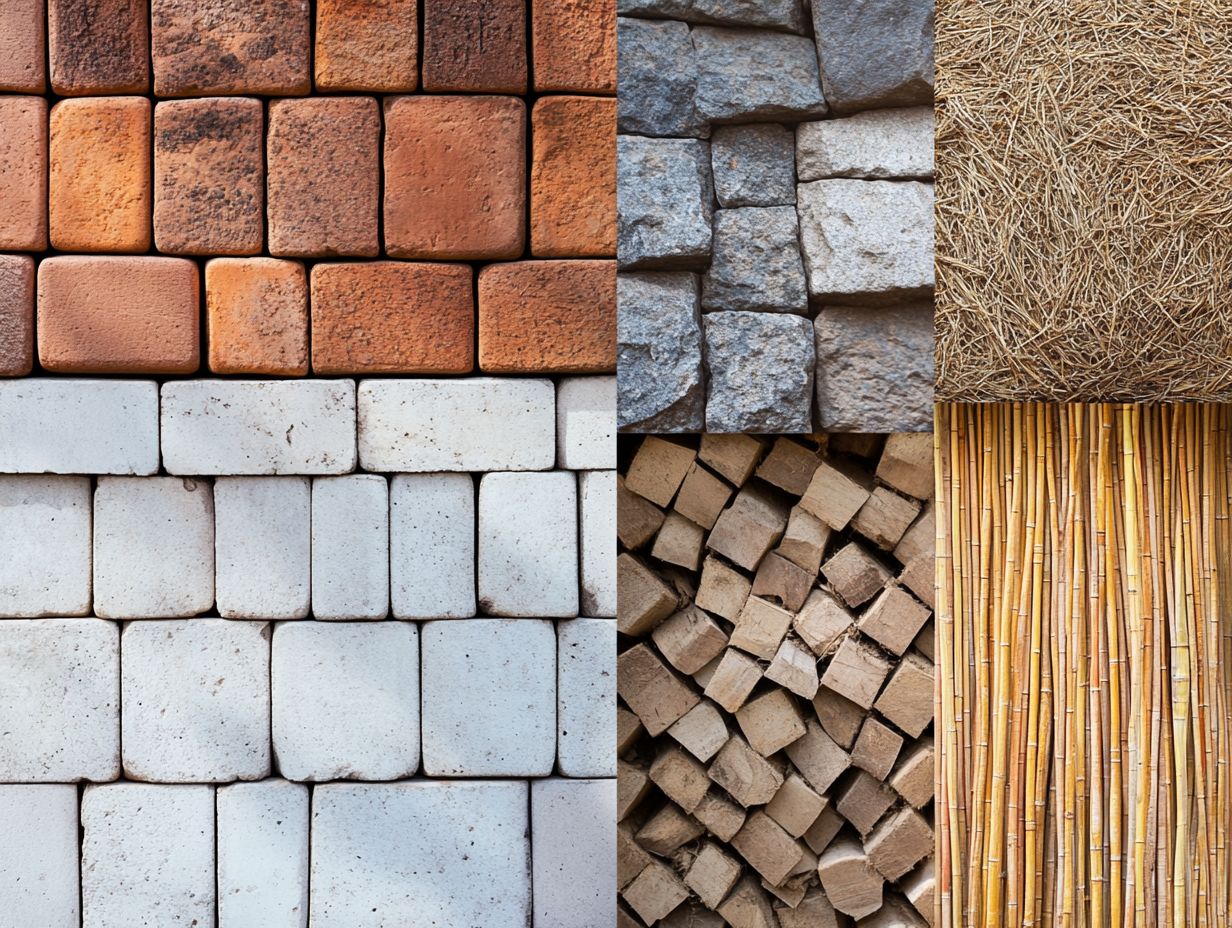
Sustainable building materials are gaining popularity fast! This reflects a growing awareness of how construction affects the environment and energy efficiency. This approach reduces harm and increases benefits.
Materials like recycled steel, rammed earth, and reclaimed wood not only help reduce waste but also enhance indoor air quality and meet contemporary building codes. By choosing sustainable options, you can create a custom home that embraces eco-friendly practices while ensuring lasting durability.
Definition and Benefits
Sustainable building materials are those sourced wisely, manufactured, and used with a keen focus on minimizing environmental impact while maximizing energy efficiency and durability. They come with a host of benefits, such as reduced carbon footprints and meeting strict building regulations. This makes them particularly appealing for custom homes.
By familiarizing yourself with these options, you can make informed decisions that elevate both the livability and sustainability of your projects.
Take mass timber, which consists of large wooden beams or panels used in construction. It not only offers a renewable alternative to traditional steel and concrete but also sequesters carbon, making it an excellent choice for modern construction. Bamboo, celebrated for its rapid growth and resilience, stands out as an eco-friendly option for various applications, from flooring to structural support. Green roofs enhance aesthetic appeal while mitigating urban heat effects and promoting biodiversity.
Collectively, these materials present a powerful solution to energy efficiency and environmental challenges, empowering builders to create spaces that are not just functional but also kind to the planet.
Environmental Impact of Traditional Materials
The environmental impact of traditional building materials presents a crucial challenge, as their production and use lead to significant ecological issues, from resource depletion to heightened greenhouse gas emissions.
While materials such as concrete and asphalt shingles are favored in Boston custom homes for their durability, they often pose serious threats to the environment. This reality underscores the importance of critically assessing their roles in the construction process and broader sustainability initiatives.
By understanding these impacts, you can empower yourself, whether as a contractor or a homeowner, to make more informed and responsible choices.
Negative Effects on the Environment
The negative effects of traditional building materials on the environment are quite significant. They encompass increased carbon emissions, resource depletion, and poor energy efficiency. All of these can lead to serious ecological consequences.
For example, the production of concrete is notably energy-intensive, contributing substantially to greenhouse gas emissions. Meanwhile, asphalt shingles often end up in landfills since they are not easily recyclable. You can make a real difference by understanding these impacts!
The widespread use of traditional materials typically results in the consumption of finite resources like timber and water. This can lead to habitat destruction and biodiversity loss, which refers to the variety of life in the world or in a particular habitat. To put it into perspective, the manufacturing of brick alone accounts for around 6% of global CO2 emissions.
Many traditional materials also come with poor insulation properties, ultimately driving up energy consumption for heating and cooling. This not only impacts your utility bills but also undermines broader efforts to combat climate change.
By considering alternatives such as recycled steel, bamboo, or rammed earth, you can significantly reduce your environmental footprint. For more information, check out this guide on how to assess the sustainability of building materials. This paves the way for a more sustainable and energy-efficient future.
Environmental Benefits of Sustainable Materials
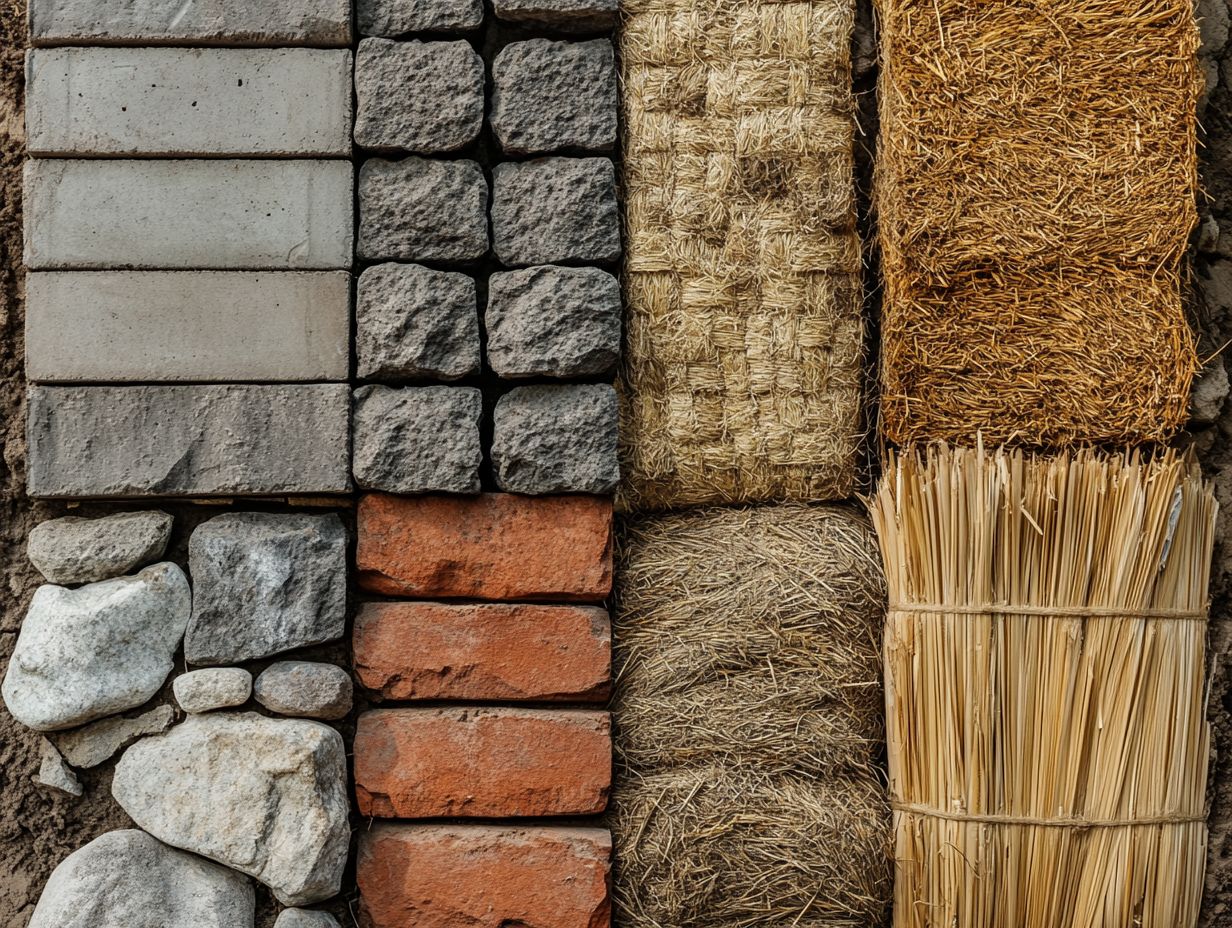
The environmental benefits of sustainable materials are truly significant. They play a vital role in reducing carbon footprints, enhancing energy efficiency, and fostering healthier ecosystems.
By choosing materials like recycled steel, reclaimed wood, and innovative solutions such as green roof systems, you not only minimize waste but also support biodiversity and improve indoor air quality.
When you integrate these materials into your Boston custom home, you can substantially reduce your environmental impact while embracing contemporary sustainability practices.
How Sustainable Materials Contribute to a Greener World
Sustainable materials are essential for creating a greener world. They minimize the environmental impact of construction and enhance energy efficiency in buildings.
Consider green roof systems: they provide insulation and energy savings, aid in rainwater management, and boost biodiversity. By prioritizing sustainable building materials, you can actively contribute to the global battle against climate change and promote environmental stewardship.
Using reclaimed wood and recycled steel significantly reduces the demand for virgin resources. This helps to conserve forests and lessen the impacts of mining.
Incorporating energy-efficient windows windows that keep your home warmer in winter and cooler in summer can greatly minimize heat loss and decrease reliance on heating systems, further enhancing energy savings.
Case studies from various urban developments reveal that selecting sustainable concrete alternatives has led to substantial reductions in carbon emissions. These practices also improve durability and maintenance.
To truly make a difference, both individuals and businesses must commit to responsible building. This means integrating sustainable materials into their projects, including rammed earth and mass timber.
Cost Comparison of Sustainable and Traditional Construction Materials
When you evaluate the cost of traditional versus sustainable building materials, it s crucial to look beyond the initial investment. Consider the long-term savings they can offer, particularly in terms of energy efficiency and maintenance.
While traditional materials like concrete and brick may come with lower upfront costs, sustainable choices such as reclaimed wood and recycled steel can lead to substantial savings over time. This is thanks to reduced energy bills and enhanced durability. For a deeper understanding of these options, consider exploring sustainable materials: cost vs. long-term benefits.
By conducting a thorough cost comparison of various materials pros and cons, you empower yourself to make informed decisions that fit your budget and align with your sustainability aspirations.
Join the movement for a greener future start your sustainable project today!
Examining the Financial Differences Between Traditional and Sustainable Materials in Boston
Examining the financial differences between traditional and sustainable building materials reveals a complex landscape shaped by initial costs, long-term savings, and maintenance considerations. While traditional materials such as steel and wood may seem more affordable at first glance, sustainable options often offer substantial financial advantages through energy efficiency and reduced lifecycle costs. Understanding these nuances gives you the power to make well-informed decisions for your Boston custom home projects.
Take bamboo flooring, for example. Yes, the upfront price might be higher than typical hardwood, but its durability and maintenance can lead to significant savings over time. A 2020 report from the National Association of Home Builders highlights that homes constructed with energy-efficient materials can enjoy utility cost reductions of up to 30% annually.
Maintenance expenses for sustainable options like recycled metal roofing and cork tend to be lower because they resist corrosion and deterioration.
By evaluating these factors holistically, including the environmental impact, the true financial benefits of sustainable choices become much clearer.
Frequently Asked Questions about Sustainable Building Materials
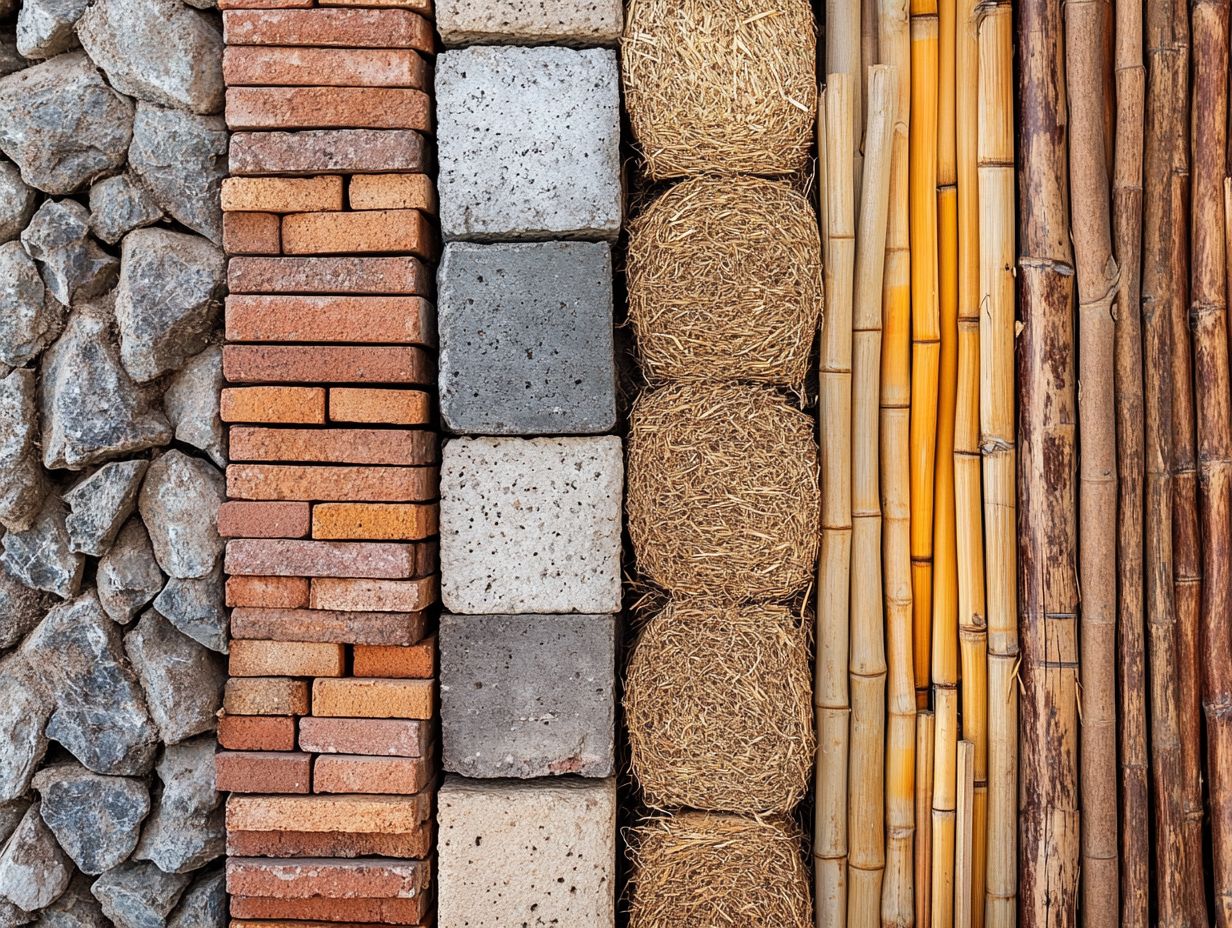
What is the difference between traditional and sustainable building materials used in Boston?
Traditional building materials refer to those commonly used in construction for many years, such as wood, concrete, and brick. Sustainable building materials, on the other hand, are environmentally friendly and have a lower impact on the planet, including options like adobe and clay.
Why is it important to compare traditional and sustainable building materials in Boston?
Comparing traditional and sustainable building materials empowers us to make smarter choices that benefit our homes and the planet in Boston. This understanding promotes the use of sustainable materials.
What are some examples of traditional building materials used in Boston?
- Wood
- Stone
- Concrete
- Brick
- Steel
What are some examples of sustainable building materials, including those relevant to Boston?
- Bamboo
- Recycled plastic
- Reclaimed wood
- Glass
- Sustainable concrete
Are sustainable building materials more expensive than traditional materials, especially in Boston?
Sustainable building materials have become more competitive, particularly for projects in Boston. In some cases, sustainable materials may even be more cost-effective in the long run due to their durability and maintenance and energy efficiency.
What are the benefits of using sustainable building materials in Boston?
Using sustainable building materials has numerous benefits in Boston, including:
- Reducing carbon emissions
- Conserving natural resources
- Promoting a healthier indoor environment
- Potentially lowering construction and maintenance costs
Additionally, using sustainable materials can contribute to green building certifications and improve the overall sustainability of a project.



